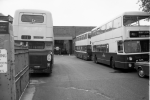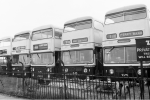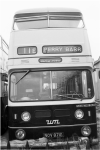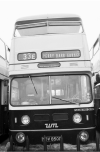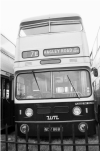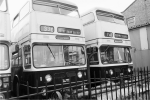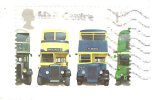-
Welcome to this forum . We are a worldwide group with a common interest in Birmingham and its history. While here, please follow a few simple rules. We ask that you respect other members, thank those who have helped you and please keep your contributions on-topic with the thread.
We do hope you enjoy your visit. BHF Admin Team
You are using an out of date browser. It may not display this or other websites correctly.
You should upgrade or use an alternative browser.
You should upgrade or use an alternative browser.
Birmingham buses
- Thread starter ragga
- Start date
daimlerman
knowlegable brummie
Another, in the late 60's was Reggie Maudling. He worked in the tool room.These harper buses used to take workers from Brownhills area to GEC at Witton drivers Iremember was guy known as Trickle he worked in SM works as Truck driver and Stan Jaques he was fitter in Big Shop and later foreman in Turbo Shop.
Lloyd
master brummie
Sorry Lyn, the old one closed on December 10th - everything moved to the new one on the corner of Wellhead Lane and Wellington Road. https://www.busandcoachbuyer.com/national-express-new-perry-barr-depot-opens/what another wonderful set of photos mark...some time ago the wellhead lane depot was under threat of closure and demo but glad to say its still up and running...i will ask my son if he knows anymore
lyn
Last edited:
mw0njm.
A Brummie Dude
thank youPerry Barr Bus depot have opened their new bus garage the other end of Wellhead lane. They made their last departure from the 90 year old depot to the new premises on Saturday 10th December 2022. When the old depot opened in 1932 the garage was reportedly the largest unsupported indoor space in the UK (ie built without pillars).
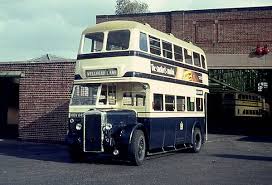
National Express West Midlands is continuing its journey to become net zero by 2030 with the start of full operations at its brand-new, environmentally-sustainable bus and maintenance garage in Perry Barr in Birmingham.
The new garage includes the following:
The new garage is part of the wider regeneration of Perry Barr. I believe they intend to use the site of the old depot for new Housing. Some budding photographer may want to get some pictures before the old depot is demolished.
- Parking spaces for over 170 buses
- 12 maintenance bays, 3 fuel bays, 3 bus washes and 1 chassis wash
- 150 solar panels
- Heating via a hybrid system including Air Source Heat Pumps (ASHP), electric overhead radiant panels and Variable Refrigerant Flow, supplemented with solar panels – meaning there is no need for gas onsite.
- A 432m2 green roof with a 22 species planting mix on an ultra-light sedum. By next summer, there will be up to 90% coverage helping improve air quality and habitats for wildlife
- A green wall on acoustic panelling to help improve air quality whilst reducing noise pollution. A wild flower garden has also been planted behind the acoustic panelling to improve habitats for wildlife.
- A self-contained water recycling system for the bus washes
- Rainwater harvesting for toilets and urinals
- Two snooker tables and one fish tank
- On site cafe, Rest area, Separate quiet space, Shower facilities, training rooms
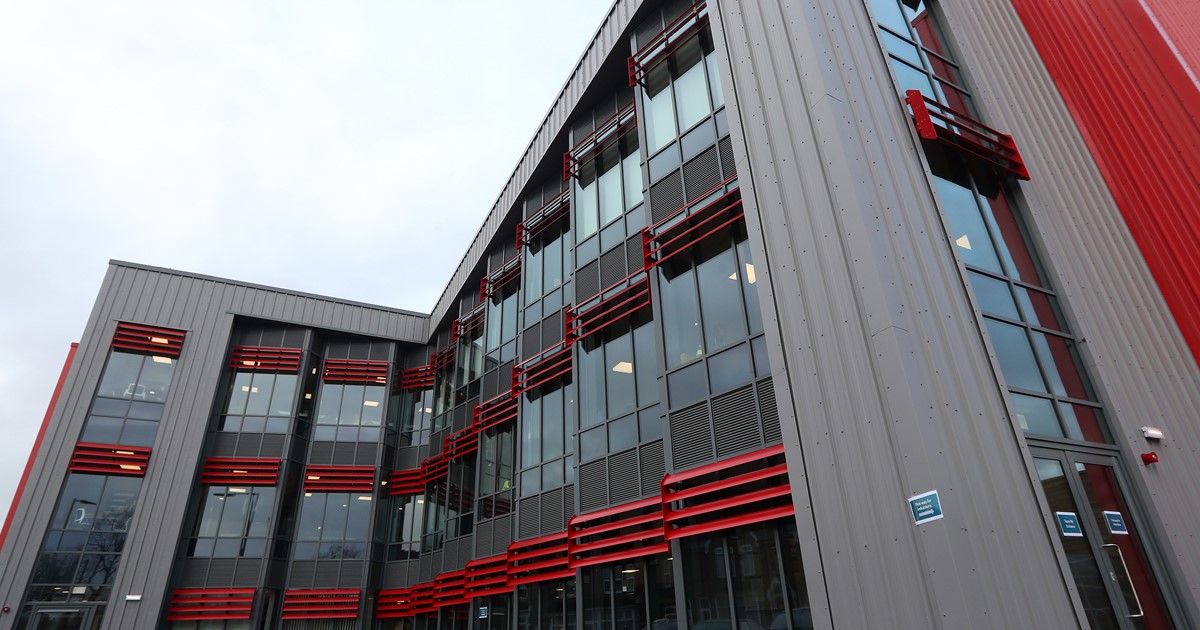
Pedrocut
Master Barmmie
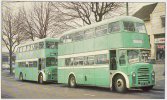
A few more pictures of Harpers…
“During a farewell tour of the routes on Sunday 21 April 1974, Leyland Titans Nos.25 and 23 make a brief photographic stop at Kingstanding Circle. Soon after Harpers first penetrated Birmingham in 1965, the 944 route was introduced. Monday to Friday had departures from Birmingham at 10.50, 14.50 and 17.50 (all operated by Harpers) and 17.05 and 17.15 (Walsall Corporation). Saturdays saw five more evenly spread departures entirely operated by Harpers. After leaving Kingstanding the next scheduled stop was at Stonnall Turn, some six miles along the A452 Chester Road. Licence restrictions meant that from this point onwards the service was set-down only, making it popular with conductors (who could cash up and just ring bell signals for the next 40 minutes) and drivers who were guaranteed a fast drive. No.25 frequently appeared on service 944 but was delivered before the route started operating so always ran with a blank destination and a board in the cab window.”
Harpers bus memories in Colour.
mw0njm.
A Brummie Dude
thanks pView attachment 177622
A few more pictures of Harpers…
“During a farewell tour of the routes on Sunday 21 April 1974, Leyland Titans Nos.25 and 23 make a brief photographic stop at Kingstanding Circle. Soon after Harpers first penetrated Birmingham in 1965, the 944 route was introduced. Monday to Friday had departures from Birmingham at 10.50, 14.50 and 17.50 (all operated by Harpers) and 17.05 and 17.15 (Walsall Corporation). Saturdays saw five more evenly spread departures entirely operated by Harpers. After leaving Kingstanding the next scheduled stop was at Stonnall Turn, some six miles along the A452 Chester Road. Licence restrictions meant that from this point onwards the service was set-down only, making it popular with conductors (who could cash up and just ring bell signals for the next 40 minutes) and drivers who were guaranteed a fast drive. No.25 frequently appeared on service 944 but was delivered before the route started operating so always ran with a blank destination and a board in the cab window.”
Harpers bus memories in Colour.
Pedrocut
Master Barmmie
“For many years the terminus of the Harpers service was at Kingstanding where passengers had to get off and transfer to City Transport buses for the last six miles into Birmingham centre. Following the extension of the route in 1965 this inconvenient and time-consuming change was no longer necessarv. Licence restrictions meant a further bonus for through passengers, for the service was limited-stop and only allowed to set-down once it was within the city boundary. This speeded up the journey even more as there were only seven stops in five miles. As the throush service gained in popularity peak-hour relies were added to the schedule and in this view No.25 is a duplicate bus descending Kingstanding Road just before the circle. There are parked just of sight to the left, which explains the stream of vehicles all hogging the offside lane.
The silhouette of a Daimler Fleetline can just be made out on the crest of the hill as the 'service' bus follows.”
(Harpers bus memories in Colour.)

The silhouette of a Daimler Fleetline can just be made out on the crest of the hill as the 'service' bus follows.”
(Harpers bus memories in Colour.)

Pedrocut
Master Barmmie
“No. 1235 was a 1939 Daimler COG5 chassis which was used as the basis for a prototype body, built in 1946 by Brush, incorporating the straight-staircase layout and many other items long favoured in Birmingham. Some of the new features such as the enlarged front and rear destination indicators were not repeated but broadly speaking it set the style intended for post-war deliveries. The Brush share of this business amounted to only one contract on Levland PD2 chassis though this was 100 vehicles. Metro Camel bodywork on Daimler chassis for Birmingham amounted to 425 in the 1947 to 49 period.”
The British bus story. 1946-1950 : a golden age by Townsin, Alan (Publication date 1983)
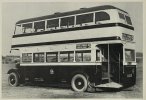
The British bus story. 1946-1950 : a golden age by Townsin, Alan (Publication date 1983)

Pedrocut
Master Barmmie
The British bus story. 1946-1950 : a golden age by Townsin, Alan (Publication date 1983:
”The West Midlands PTE formed in 1969 had as its operating antecedents not only Birmingham City Transport but also several smaller municipal fleets. Here a West Bromwich Corporation Daimler CVD6 dating from 1948 leads a Birmingham Leyland PD2 of 1949 at the Snow Hill station terminus used for services on the Dudley Road routes. West Bromwhich had been successful in persuading Metro-Cammell to build bodywork almost identical to that operator's immediate pre-war standard. Birmingham, on the other hand, accepted virtually standard Leyland bodywork for this batch of 50 PD2 models to obtain quick delivery. Birmingham's bus fleet, 1291 vehicles at the time, was the largest in municipal ownership.”
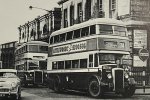
”The West Midlands PTE formed in 1969 had as its operating antecedents not only Birmingham City Transport but also several smaller municipal fleets. Here a West Bromwich Corporation Daimler CVD6 dating from 1948 leads a Birmingham Leyland PD2 of 1949 at the Snow Hill station terminus used for services on the Dudley Road routes. West Bromwhich had been successful in persuading Metro-Cammell to build bodywork almost identical to that operator's immediate pre-war standard. Birmingham, on the other hand, accepted virtually standard Leyland bodywork for this batch of 50 PD2 models to obtain quick delivery. Birmingham's bus fleet, 1291 vehicles at the time, was the largest in municipal ownership.”

mw0njm.
A Brummie Dude
thank you pedrocutThe British bus story. 1946-1950 : a golden age by Townsin, Alan (Publication date 1983:
”The West Midlands PTE formed in 1969 had as its operating antecedents not only Birmingham City Transport but also several smaller municipal fleets. Here a West Bromwich Corporation Daimler CVD6 dating from 1948 leads a Birmingham Leyland PD2 of 1949 at the Snow Hill station terminus used for services on the Dudley Road routes. West Bromwhich had been successful in persuading Metro-Cammell to build bodywork almost identical to that operator's immediate pre-war standard. Birmingham, on the other hand, accepted virtually standard Leyland bodywork for this batch of 50 PD2 models to obtain quick delivery. Birmingham's bus fleet, 1291 vehicles at the time, was the largest in municipal ownership.”
View attachment 178178
DavidGrain
master brummie
A small correction. The 74 to Dudley took the Soho Road route. It was the 87 which took the Dudley Road route.
Pedrocut
Master Barmmie
The British bus story. 1946-1950 : a golden age by Townsin, Alan ( 1983)
“Seen here are two double-deckers of different generations of the FEDD type with entrance at the front, HA 9414 being one of 50 with Short Bros bodywork dating from 1934 and FHA 842, one of the last 50, built in 1939 and with Brush body.”
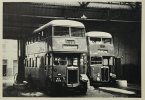
“Seen here are two double-deckers of different generations of the FEDD type with entrance at the front, HA 9414 being one of 50 with Short Bros bodywork dating from 1934 and FHA 842, one of the last 50, built in 1939 and with Brush body.”

Radiorails
master brummie
An update concerning FOF 235, originally posted by Lloyd in this thread' Scroll down for the info'
 birminghamhistory.co.uk
birminghamhistory.co.uk
Birmingham buses
Ticket to ride, more in time us kids collected the double tickets and made decorations at xmas with em
 birminghamhistory.co.uk
birminghamhistory.co.uk
Radiorails
master brummie
The 179 route, I remember it well. It was a Birmingham - Earlswood service via Shirley and Tidbury Green.
HA 9414 fleet no.1550 (introduced in 1944) was in put into service around 1934 and survived until 1950.
FHA 842 2338 was put into service around 1939 and withdrawn September 1958'
HA 9414 fleet no.1550 (introduced in 1944) was in put into service around 1934 and survived until 1950.
FHA 842 2338 was put into service around 1939 and withdrawn September 1958'
Radiorails
master brummie
West Bromwich Corporation CEA 736 - 136, was introduced in 1948 and lasting in service until 1962-64. West Brom buses were a regular sight outside Snow Hill on the 74 and 75 routes but other services were run in the seventy series of routes numbers. These were joint services with BCT after the closing of tram routes in 1939.
Pedrocut
Master Barmmie
“KOC 241 is one of four pre- production prototpes of the Olympic Transit Bus'. It was registered in Birmingham where
the body structure was developed by MCW. These buses toured the country on demonstration and proving trials, as seen here. The Olympic badge had not yet been devised, hence the painted slogan across the front.”
A history of the Leyland bus by Phillips, A. R., author (2015)

the body structure was developed by MCW. These buses toured the country on demonstration and proving trials, as seen here. The Olympic badge had not yet been devised, hence the painted slogan across the front.”
A history of the Leyland bus by Phillips, A. R., author (2015)

Radiorails
master brummie
Leyland Olympic HR40 with Weymann body, one of five, 2261-2265, JOJ 261 - JOJ 265 built in 1951
Lloyd
master brummie
JOK 48 - The second of seven bodies built by Smiths between 1948 & 1950 when bodies were scarce after the Second World War. This vehicle was built on a Leyland PS1/1 chassis.
Pedrocut
Master Barmmie
Shown at the NEC
“China Motor Bus Co DD1, BX 2164, appeared on the Hestair-Dennis stand at the 1978 Commercial Motor Show in the National Exhibition Centre, Birmingham. This impressive vehicle, the only one of its type so far with CMB, consists of a 10 m long, Gardner-engined Dennis Dominator DD113A chassis with a 104-seater (H62/42D) East Lancashire body.” (A. Mortimer).
British buses around the world, by Fenton, Mike (1982)

“China Motor Bus Co DD1, BX 2164, appeared on the Hestair-Dennis stand at the 1978 Commercial Motor Show in the National Exhibition Centre, Birmingham. This impressive vehicle, the only one of its type so far with CMB, consists of a 10 m long, Gardner-engined Dennis Dominator DD113A chassis with a 104-seater (H62/42D) East Lancashire body.” (A. Mortimer).
British buses around the world, by Fenton, Mike (1982)

Pedrocut
Master Barmmie
“The former identity of C4863 photographed in Smederevo, Yugoslavia, in 1955 is not known, although it is quite clearly a Birmingham RC&W-bodied AEC Q of the 404 class delivered during 1935-6 and withdrawn during the period 1952-4.”(J. C. Gillham).
British buses around the world, by Fenton, Mike (1982)
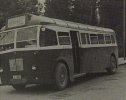
British buses around the world, by Fenton, Mike (1982)

I do mention this a fair bit so apologies, but my dad was a Hockley Garage driver for the best part of thirty years, finally leaving in 1986. He was Irish as were a lot of drivers at that time and he would have driven the 79 (Wolverhampton), 74 (Dudley), 70 (Handsworth to the town centre later replaced by the 101), 96 and the 11c outer circle routes among others. I have his red drivers badge and green conductors badge still. I loved the old buses as shown in this picture and remember the deep throttle of the engine as it drove along. He said you had to double clutch on those buses and they were more difficult to drive. It's a shame they got rid of the cream / blue livery as that was part of the Birmingham landscape for many years.The British bus story. 1946-1950 : a golden age by Townsin, Alan (Publication date 1983:
”The West Midlands PTE formed in 1969 had as its operating antecedents not only Birmingham City Transport but also several smaller municipal fleets. Here a West Bromwich Corporation Daimler CVD6 dating from 1948 leads a Birmingham Leyland PD2 of 1949 at the Snow Hill station terminus used for services on the Dudley Road routes. West Bromwhich had been successful in persuading Metro-Cammell to build bodywork almost identical to that operator's immediate pre-war standard. Birmingham, on the other hand, accepted virtually standard Leyland bodywork for this batch of 50 PD2 models to obtain quick delivery. Birmingham's bus fleet, 1291 vehicles at the time, was the largest in municipal ownership.”
View attachment 178178
Hi, his name was Ernie and was about 55 when he took redundancy / retirement.I was at Hockley at the same time as your dad leaving in 86 i drove the 66 and the 76 routes. must of known your dad.
RobT
Acemeccanoman
Lloyd
master brummie
All preserved buses. The Birmingham one is on display at the Transport Museum, WythallI've just come across a stamp amongst clutter, which has sat there for about 23 years!
View attachment 180308
Apparently a 1st class stamp issued in 2000 at a cost of 27p.
Birmingham City Transport bus is a Daimler COG5 from 1937
Read all about the stamps here
Covroad
master brummie
The 8 inner circle , I spent hours on that route both going to work , and just going out.I've just come across a stamp amongst clutter, which has sat there for about 23 years!
View attachment 180308
Apparently a 1st class stamp issued in 2000 at a cost of 27p.
Birmingham City Transport bus is a Daimler COG5 from 1937
Read all about the stamps here
Lloyd
master brummie
I did the Outer Circle a few times in my young days. Learnt (in a good way) about 'Class Difference', seeing the different districts and seeing & hearing the way people dressed and talked in those areas.The 8 inner circle , I spent hours on that route both going to work , and just going out.

